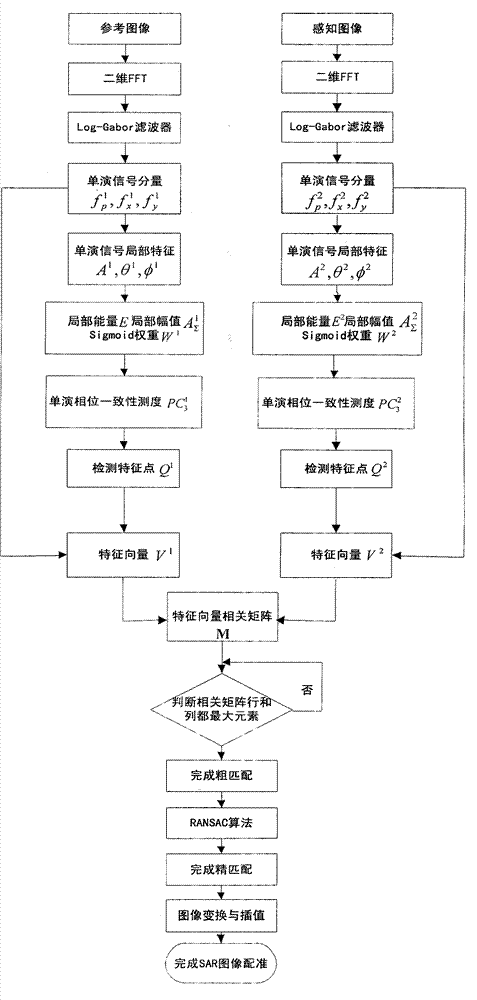Method for realizing image registration of synthetic aperture radar (SAR) by using three components of monogenic signals
A technology of synthetic aperture radar and single signal generation, which is applied in image analysis, image data processing, instruments, etc., can solve the problems of low positioning accuracy of feature points, large number of feature points, and many false targets, and achieve fast registration speed, The effect of low false alarm rate and strong environmental adaptability
- Summary
- Abstract
- Description
- Claims
- Application Information
AI Technical Summary
Problems solved by technology
Method used
Image
Examples
Embodiment Construction
[0018] The present invention will be described in further detail below in conjunction with the accompanying drawings. With reference to the accompanying drawings in the description, the specific implementation of the present invention is divided into the following steps:
[0019] (1) Design a frequency-domain Log-Gabor filter, perform Log-Gabor filtering on the reference image and the image to be registered, obtain the frequency-domain response of the Log-Gabor filter, and obtain three components of the single-cast signal, based on the following formula
[0020] f p (x,y,s)=I*F -1 (G(ω))
[0021] f x ( x , y , s ) = F - 1 ( ( - 1 · ω ...
PUM
 Login to View More
Login to View More Abstract
Description
Claims
Application Information
 Login to View More
Login to View More - R&D
- Intellectual Property
- Life Sciences
- Materials
- Tech Scout
- Unparalleled Data Quality
- Higher Quality Content
- 60% Fewer Hallucinations
Browse by: Latest US Patents, China's latest patents, Technical Efficacy Thesaurus, Application Domain, Technology Topic, Popular Technical Reports.
© 2025 PatSnap. All rights reserved.Legal|Privacy policy|Modern Slavery Act Transparency Statement|Sitemap|About US| Contact US: help@patsnap.com



